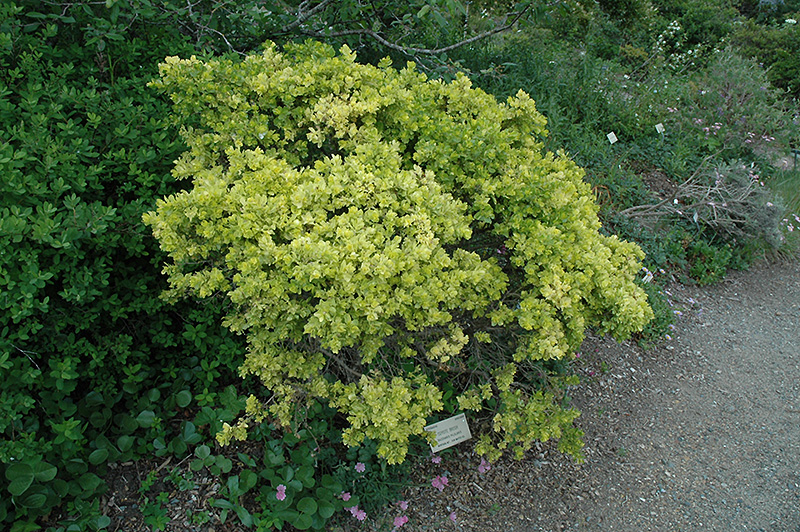Height: 10 feet Spread: 5 feet
Sunlight:
Hardiness Zone: 7a Other Names: Chaparral Broom, Bush Baccharis, Coyote Bush Description: Blooming between August and December, this woody evergreen perennial produces white fluffy female, and yellowish male flowers on separate plants; seeds spread by wind, so undesirable spread could occur; very drought tolerant Ornamental Features Coyote Brush is bathed in stunning clusters of fragrant yellow flowers with white overtones at the ends of the stems from mid summer to late fall. Its attractive fragrant oval leaves emerge yellow in spring, turning grayish green in color the rest of the year. Landscape Attributes Coyote Brush is an herbaceous evergreen perennial with an upright spreading habit of growth. Its medium texture blends into the garden, but can always be balanced by a couple of finer or coarser plants for an effective composition. This is a relatively low maintenance plant, and may require the occasional pruning to look its best. It is a good choice for attracting bees and butterflies to your yard, but is not particularly attractive to deer who tend to leave it alone in favor of tastier treats. It has no significant negative characteristics. Coyote Brush is recommended for the following landscape applications; Planting & Growing Coyote Brush will grow to be about 10 feet tall at maturity, with a spread of 5 feet. It grows at a medium rate, and under ideal conditions can be expected to live for approximately 20 years. As an evegreen perennial, this plant will typically keep its form and foliage year-round. This plant should only be grown in full sunlight. It prefers to grow in average to moist conditions, and shouldn't be allowed to dry out. It is not particular as to soil type or pH. It is somewhat tolerant of urban pollution. This species is native to parts of North America.![]()
![]()
![]()
![]()
![]()
![]()
![]()
![]()
![]()
![]()
![]()
![]()
top of page
Louie's Nursery Menifee - Plant Finder
Characteristics
Applications
Features & Attributes
This tool is an online resource representing many of the varieties that we carry over the course of the season, and is intended for informational purposes only. Inventory varies seasonally, so we cannot guarantee that every plant will be in stock at all times - please contact the store directly for current availability. It does not include our entire selection of plants, so be sure to visit our store to see varieties that may not be represented on this list.
bottom of page
